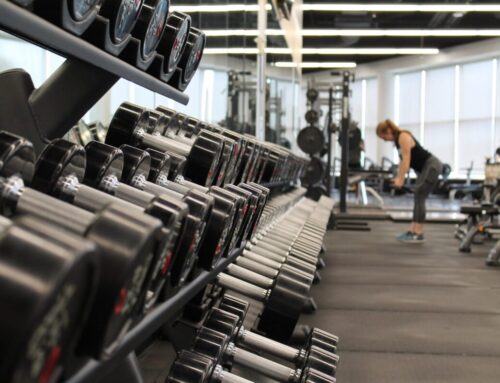“The biggest factor determining risk in schools is what the virus is doing outside them,” says Caitlin Rivers, a senior scholar with the Johns Hopkins Center for Health Security and a co-author of a National Academies of Sciences, Education, and Medicine report on reopening schools published in mid-July last year. “The number of new daily cases over the last couple of weeks is important to know,” she says.
Can we open schools safely and if so…how?
It is the question that millions of Americans have been asking as the COVID-19 pandemic gets closer to entering its second year.
While we don’t aim to answer that question in this blog post – we aren’t even sure if there is a correct answer – what we will do is discuss some key considerations.
Considerations that you will want to ponder as you try to decide what’s best for you and your children in your part of the country.
So, without further ado, let’s take a look at 5 considerations for safely opening schools in your county…
1. The 4 Core Precautions
While many disagree on key aspects of reopening, public health experts and most teachers do agree on four core precautions that must be taken when opening schools:
- Universal masking – universally agreed on by the clinical community
- Grouping students into cohorts – so that if one person gets the virus only a limited group is exposed
- Frequent testing of teachers, students, and staff – to quickly identify cases and prevent widespread outbreaks
- Suitable ventilation – which could mean opening windows to having improved HEPA filters for the HVAC unit
According to Megan Ranney, an ER physician and Director for the Center for Digital Health at Brown University:
“Today in most of the United States, if you could have these things available, it would be for the most part safe to open schools even without teachers being vaccinated.” 1
2. The Amount of Funding in Your Area
According to Ranney, the optimum strategy isn’t necessarily to open up all of the schools now nor is it to keep all schools shut until everyone is vaccinated – but instead there is a middle ground. That middle ground is where many schools can open safely but according to Ranney it all “depends on funding and political will.”
For now, she and others believe that many schools around the US would be able to open if they had the funding for the four core precautions discussed above: masks, testing, proper ventilation and cohorting kids in stable groups.
Unfortunately, many do not.
3. The Level of Community Spread in Your Area
Another important consideration to be aware of is the level of community spread of COVID-19 in your area. At a certain level, according to experts, positive rates in a community can be too high for schools to safely operate. Or the positive rate is so high that students, faculty, and staff are always in quarantine.
According to the CDC, in order for schools to open safely, community spread should be less than what they consider “high incidence” or 50 cases per 100,000 people.
4. Other Metrics to Consider
What other metrics should we consider when deciding whether or not to open schools?
According to this article from the Johns Hopkins School of Public Health, there are several:
“The biggest factor determining risk in schools is what the virus is doing outside them,” says Caitlin Rivers, a senior scholar with the Johns Hopkins Center for Health Security and a co-author of a National Academies of Sciences, Education, and Medicine report on reopening schools published in mid-July last year.
“The number of new daily cases over the last couple of weeks is important to know,” she says.
The percent of coronavirus tests that are coming back positive is another valuable metric. “In places where you have a very high test positivity, like well into the double digits, that suggests that the outbreak is very widespread and that testing isn’t keeping up,” Rivers advises.
Other COVID-19 metrics that experts are following include hospitalizations, ICU beds, and deaths.
“Regardless of the metric, it’s important to see how the numbers are trending over time,” Rivers says, and not to be guided by anomalies like a sudden single-day spike or drop in new cases. Data reported on Mondays, for example, are often much lower than other days. “So, two weeks gives you a good sense of how things are looking overall and what direction they’re headed. Are they getting worse, or are they getting better?” Rivers says.” 2
5. Are Students Who Attend in Person at Higher Risk?
This is an interesting question because the research is mixed.
On the one hand, a study from the CDC says that children who attend in-person classes aren’t likely at higher risk:
“A new study from the CDC indicates that children who attend in-person classes likely aren’t at higher risk of contracting the novel coronavirus than those who don’t.
For the study, researchers looked at data on confirmed cases of coronavirus infections among children, adolescents, and young adults up to age 24 between March 1, 2020, and Dec. 12, 2020, that was reported by 44 states, the District of Columbia, two US territories, and one freely associated state.
According to CDC researchers, there were nearly three million confirmed and reported coronavirus infections among children, adolescents, and young adults in the areas included in the data. Incidence rates varied by age group, with almost 60% of the reported cases occurring among adults ages 18 to 24.” 4
While in another study published in JAMA Pediatrics, researchers advised caution:
“In a separate study published Monday in JAMA Pediatrics, however, researchers found that although coronavirus infection rates may be lower among children than adults, children are still at a notable risk of developing a severe case of COVID-19.
For the study, researchers looked at data from 22 states on 5,364 patients ages 19 and younger who had been hospitalized for COVID-19 between May 15, 2020, and Nov. 15, 2020.
The researchers found that in May of last year, the hospitalization rate among children was 2 per 100,000. That rate increased to 17.2 per 100,000 children in November 2020, the researchers found – and that rate had increased at more than double the growth seen among adult patients during the same time period, according to Pinar Karaca-Mandic, a health economics expert at the University of Minnesota and senior author on the study.
“This demonstrates that COVID still has the potential to cause serious illness in children,” Karaca-Mandic said. “It’s not like children are immune. It’s not like children are not at risk.” 4
There is no doubt that any decision made on whether or not to open schools must be made by focusing on both safety and equity. While it is not an easy decision, the considerations discussed in this blog post are some of the important ones that should be considered to open with confidence…Community Confidence!
You can use the Community Confidence platform to get up-to-the-minute data on the state of COVID-19 in your county. Community Confidence is a data-driven decision support tool for NC county leaders to use when making important decisions that will impact their communities during the pandemic or other significant health challenges. Our platform and weekly Insights Report combines actionable scientific data with community preferences to enable informed decision making that will restore confidence. For further information visit: communityconfidence.org.
References
1 https://www.vox.com/22254942/covid-19-schools-reopening-cases-cdc-opening
3 https://www.npr.org/2020/10/21/925794511/were-the-risks-of-reopening-schools-exaggerated
4 Advisory Board Daily Briefing





